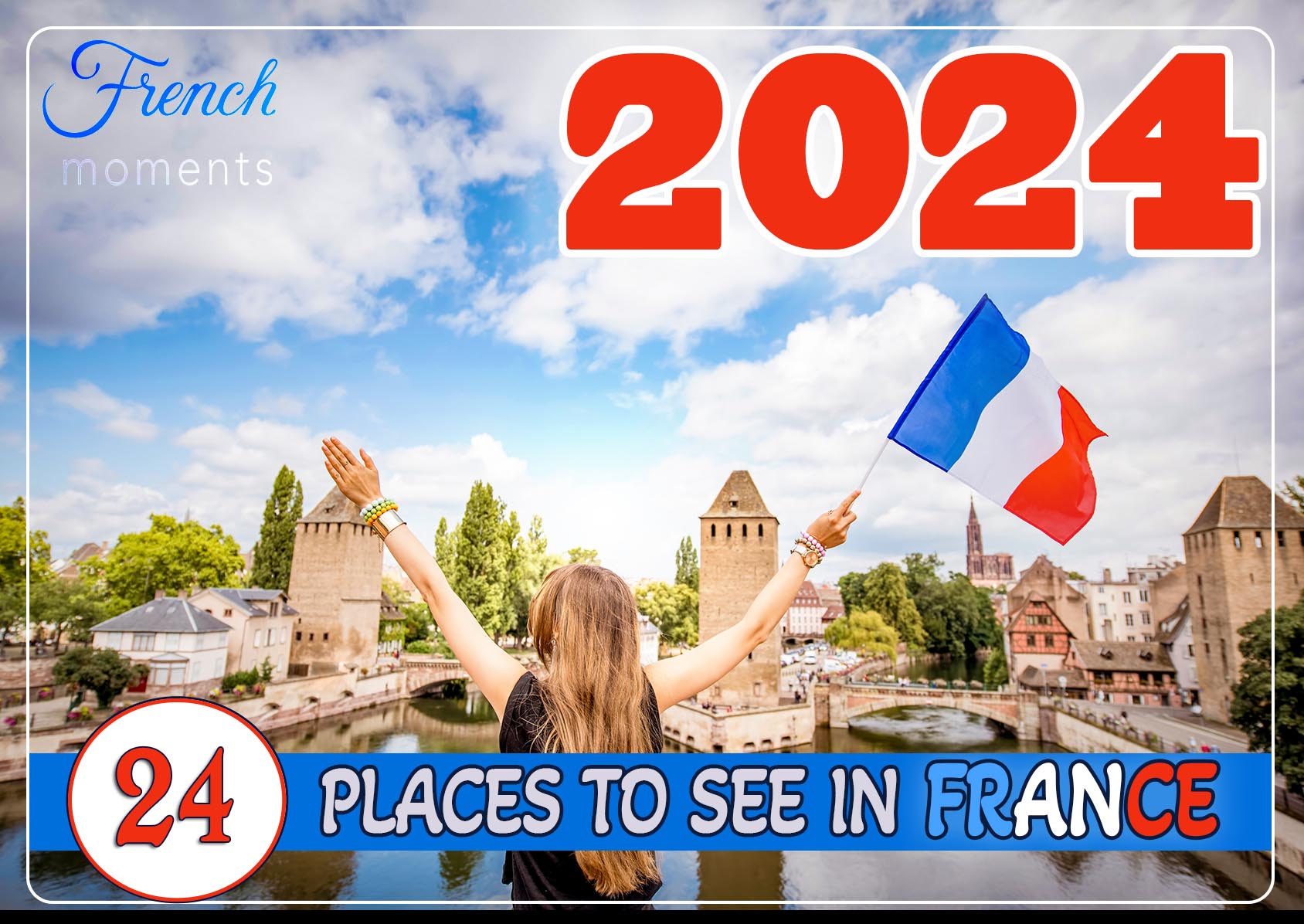Nancy is famous worldwide for its three 18th century squares, which are World Heritage sites listed by UNESCO. However its old town centre should not be missed when visiting the former capital of the Dukes of Lorraine. Nancy Old Town includes some prestigious monuments and buildings such as the Ducal Palace, the St. Epvre church and a number of Renaissance mansions. Follow the guide!
The Nancy Old Town: the “Ville Vieille”
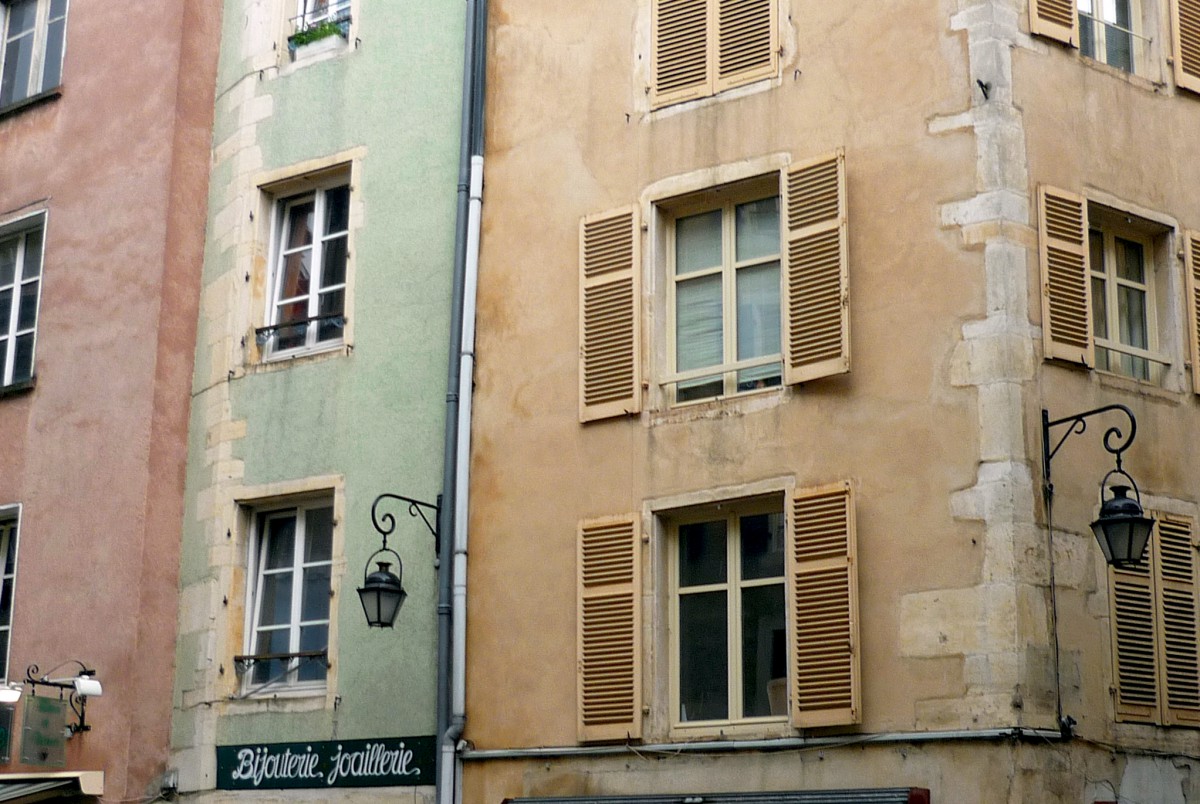
Over the last 15 years – after much restoration –, Nancy Old Town has revealed itself to be a significant asset amongst visitors and amateur students of art. The “Ville Vieille” is Nancy’s historic centre, founded in the 11th century and displays some good examples of medieval and Renaissance style architecture. The “Ville Vieille” was the Nancy of the Middle Ages. Around it were to be found only swamps, fields and forests. The most eminent building was the castle of the Dukes of Lorraine. Nestled around the Grande Rue and the Ducal Palace, the “Ville Vieille” is stil there to be discovered with its narrow streets, a stone’s throw from the magnificent Place Stanislas. This article will bring this interesting district of town to light, starting at Place Saint-Epvre, the forme epicentre of this busy city.
Place Saint Epvre and the Basilica
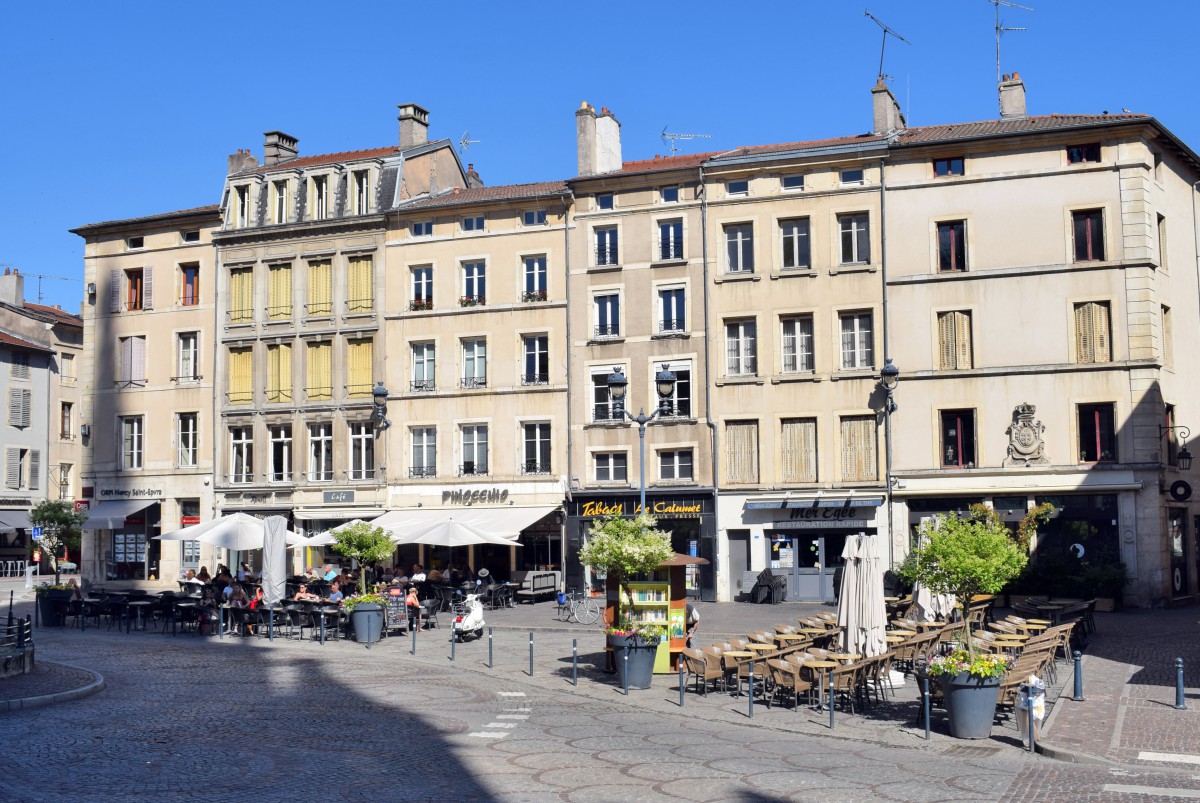
This square was the main trading centre in the Middle-Ages where a market used to be held. The statue in the middle depicts Duke René II who defeated the Duke of Burgundy, Charles the Bold, at the Battle of Nancy in 1477.
Despite its appearance, the Gothic Saint-Epvre basilica, which towers above the Old Town was only built at the end of the 19th century by Prosper Morey. Nevertheless, it remains a beautiful masterpiece of gothic architecture praised by Viollet-le-Duc (the architect who renovated France’s most celebrated cathedrals and Carcassonne).
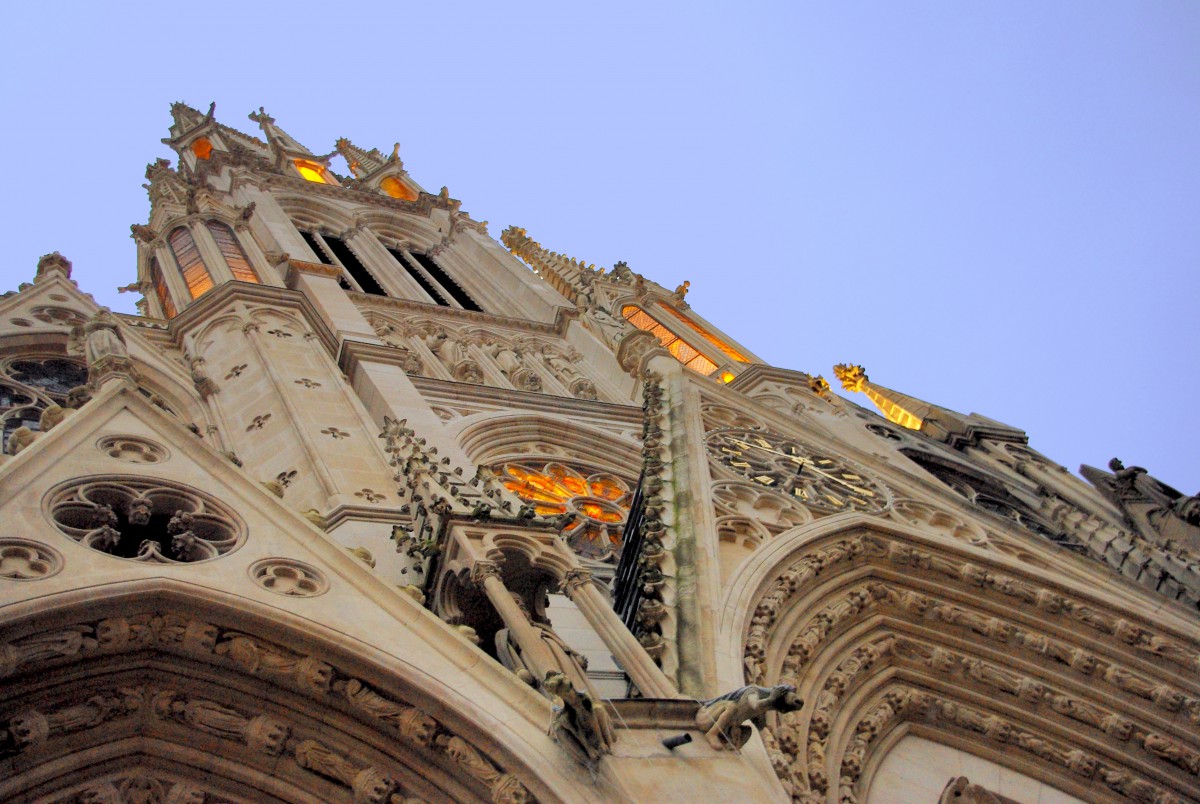
Many famous contributors of the 19th century generously donated to its erection: Napoleon III, Austrian Emperor Franz-Joseph, Pope Pius and Ludwig II of Bavaria. It was the Church’s priest, Abbot Trouillet, who sought the generosity of the European elite and aristocracy of his time.
Emperor Franz-Joseph donated the monumental main staircase and some stained-glass windows from Bavaria portraying him and his wife under the features of Saint Francis and Saint Elizabeth. Napoleon III and the Empress Eugenie also offered stained-glass windows depicting them as Saint Louis and Saint Eugenie (even though their faces were altered after 1870).
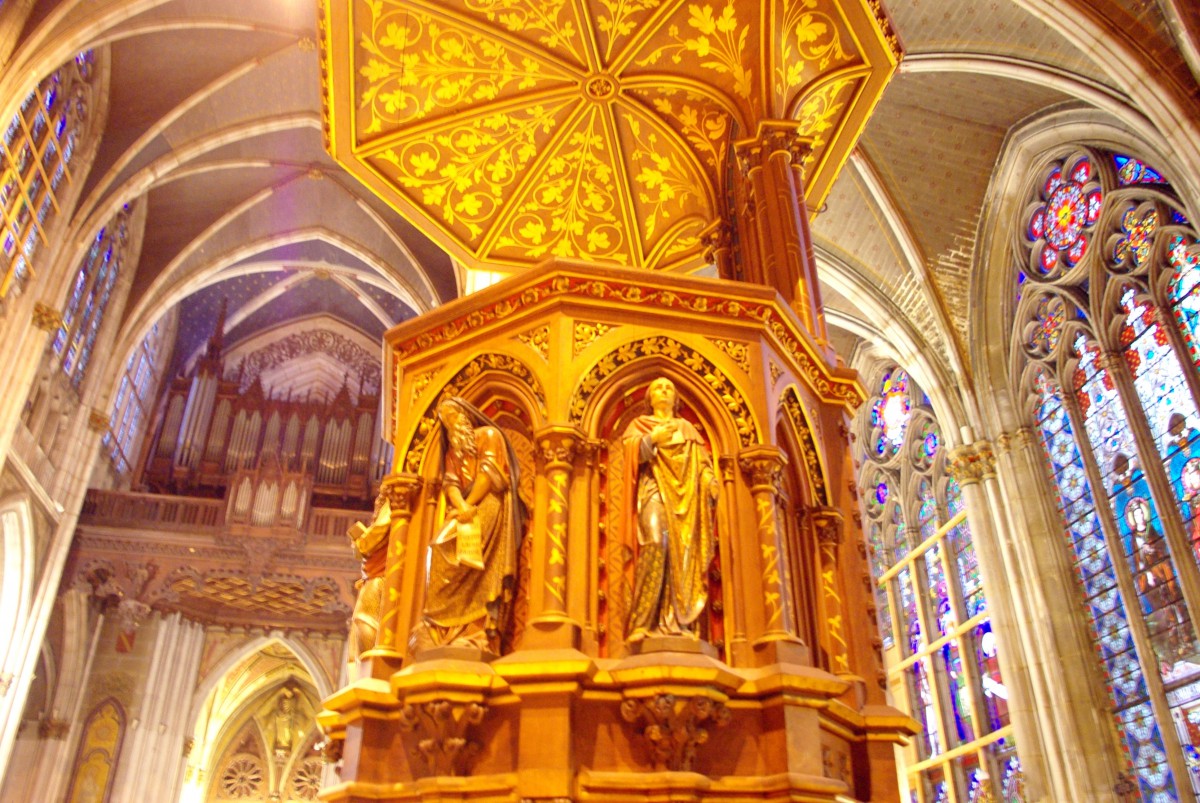
However, the style of the new church did not receive a consensus among Nancy’s population because the emblematic watchtower of the original church had not been kept. The new church’s bell tower rises up to 87 metres, high above the distinctive copper roofs, which have weathered to pale green. The violent December 1999 storm damaged the roofs and the tower. Today, the church is undergoing a thorough external renovation that is planned to last several years.
From the square, take the little street of Rue Monseigneur Trouillet, second on the right after the Grande Rue.
The Historic Mansions in Nancy Old Town
Rue Monseigneur Trouillet and Rue des Loups
These peaceful streets, parallel to the busy Grande Rue, have a number of beautiful private mansions. Two of them are worth a stop: the Haussonville Mansion and the Mansion des Loups.
The Haussonville Mansion (Hôtel d’Haussonville)
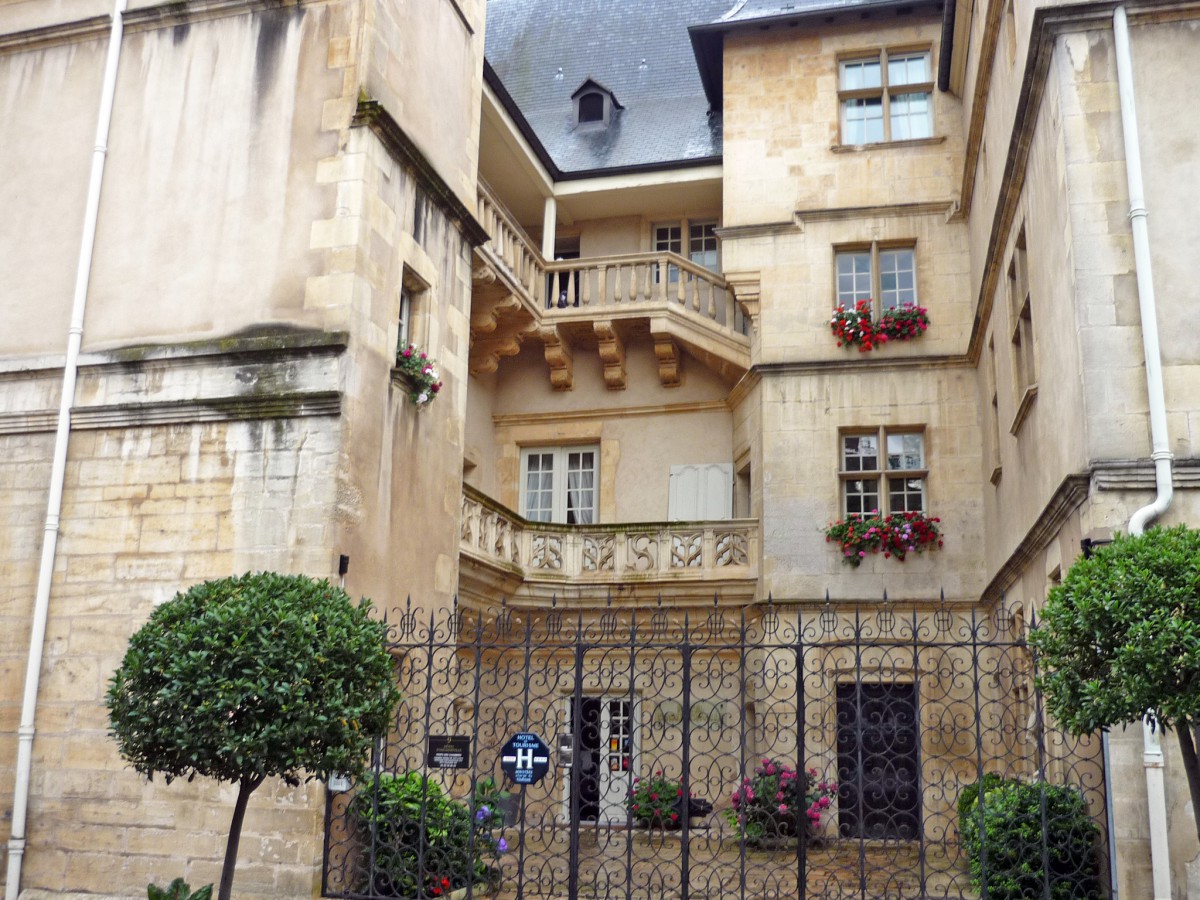
No 9, Rue Monseigneur Trouillet
The mansion houses a 4 star hotel with tastefully decorated rooms. The street façade surrounds a lovely courtyard. The beautiful balustrades were designed in two different styles: flamboyant Gothic (first floor) and Renaissance (second floor).
The mansion was built between 1528 and 1543 by Jean d’Haussonville, the Seneschal of Lorraine who sadly did not live long enough to see it completed. An ornate door was added in the 19th century to the staircase tower’s doorway.
The Wolves Mansion (Hôtel des Loups)

No 1, Rue des Loups
This mansion is located in Rue des Loups (Wolves’ Street), to which it owes its name. The architect Germain Boffrand built it in the 18th century.
Two stone wolves in a sitting position stand at each side of the monumental gate. They tell us about the function of the owner: Master of the Wolf Hunt of the Duke of Lorraine.
At the end of Rue des Loups, turn left to Rue Haut-Bourgeois towards the Craffe Gate.
The Ferraris Mansion (Hôtel Ferrari)
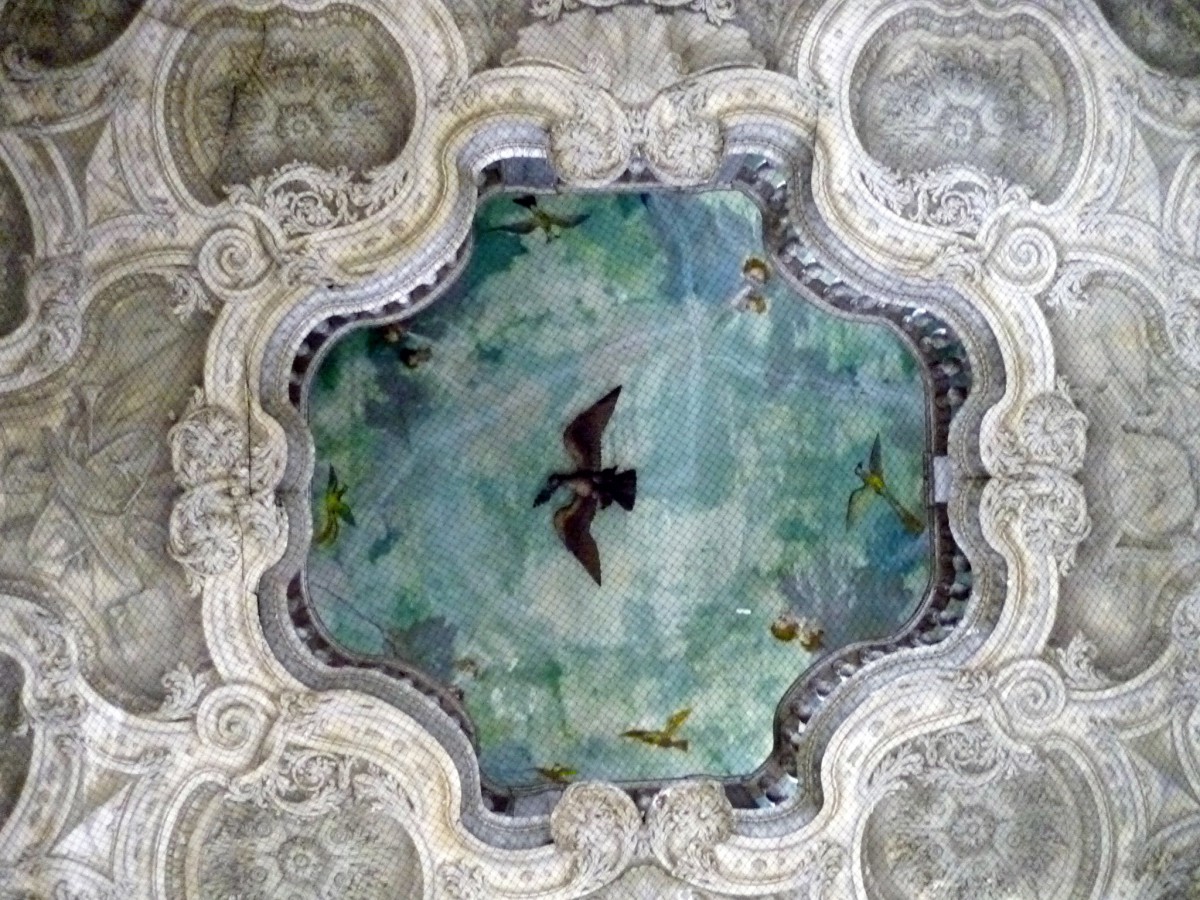
No 29, Rue Haut-Bourgeois
With such a name, everyone would guess that there is a certain link to Italy. Indeed, Louis de Ferrari was a native of Northern Italy who had been exiled from his land during a French invasion. He ended up in Lorraine, under the service of Duke Charles V of Lorraine. Louis de Ferrari fitted in well with the Lorraine nobility and eventually married Anne Charlotte de Fontette.
Around 1717 he built a magnificent building which revealed his Italian origins through the use of the family coat of arms: the Florentine fleur-de-lis. The porch of the classical street façade leads to a courtyard typical of mansions of that time and decorated with a fountain built under a segmental arch. A statue of Neptune leaning on a seahorse stands in its centre. Two groups of cherubs used to flank the statue, adding more appeal to the fountain, but were taken out in the early 20th century. This painted niche was restored during the Belle Epoque but unfortunately is looking deteriorated nowadays.
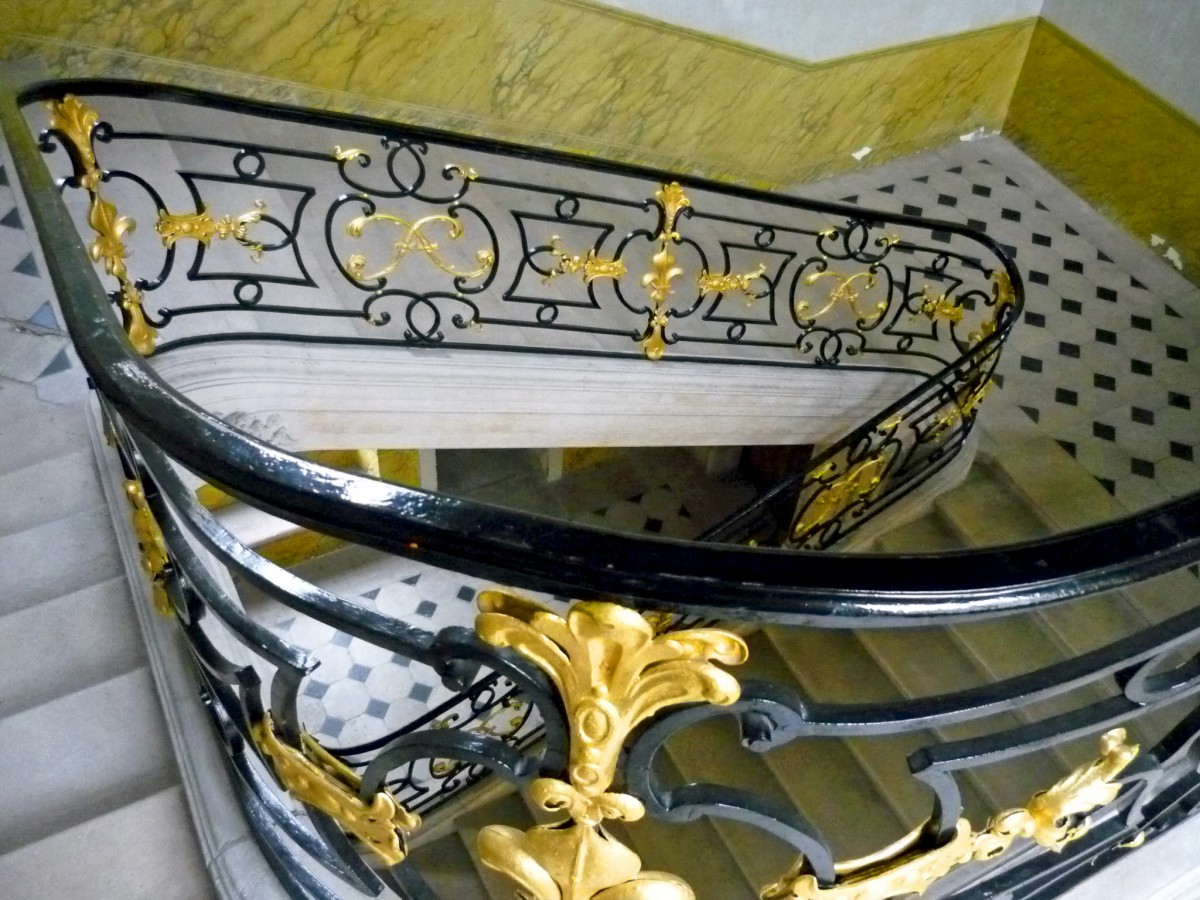
On the right-hand side of the porch is a beautiful staircase decorated with rails designed by Jean Lamour (the designer of Place Stanislas’ railings). Its door is usually open so you can admire the flight of stairs made of stone, dominated by the celebrated ceiling in the loggia with its exotic birds and enhanced with an architectural trompe-l’oeil. The painted sheet-iron eagle was added in the 19th century to the celebrated ceiling above the staircase. Its head used to follow the movement of the roof’s weathercock.
Notice the alternation of the Ferrari Fontette’s initials with the Florentine fleurs-de-lis along the handrail.

Above the porch is a grotesque mask of Saturn. Elaborate consoles support an elegant balcony set above the porch, which in turn is crowned by a triangular pediment and a rocaille cartouche. The arms of the Ferraris were destroyed during the Revolution; all that has remained is its base, made of graceful Foo dogs (which legend described as dragons!) – inspired by Chinese art.
At the end of Rue Haut-Bourgeois, your walk will lead you to the Craffe Gate.
The Craffe Gate (Porte de la Craffe)
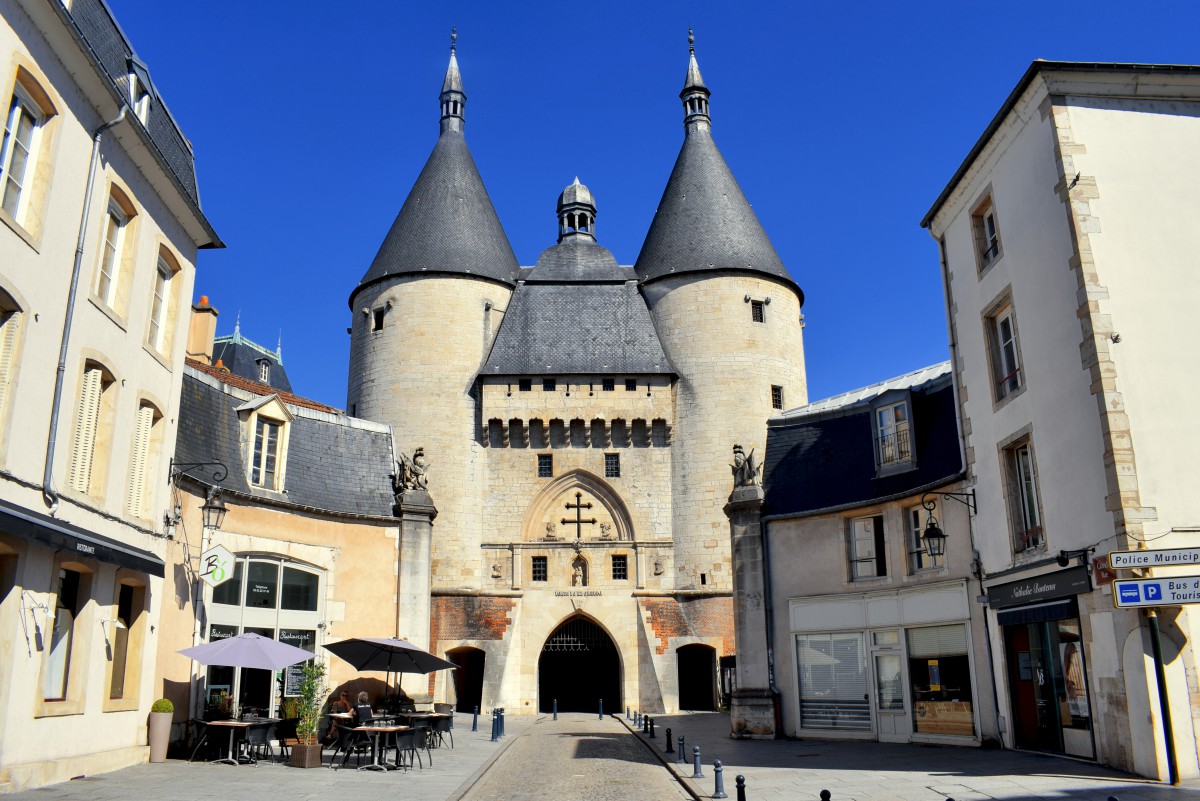
Of all the extensive fortifications erected around the “Ville Vieille” until the 16th century, only a very few parts of them remain today. The best example is the impressive Craffe Gate.
The Craffe Gate, built in the 14th century, remains the oldest and the most remarkable part of the city’s walls and housed a sinister prison from the 15th century. Its twin towers were built in 1463 and have walls three metres thick whose windows were opened in order to let soldiers firing in all directions to their enemies. On top of the gateways, brattices were designed to drop missiles, boiling oil and pitch onto the enemy below.
As in one of the gateway of the Cathedral of Metz, the centre of the gate was altered in the 17th century to display a classical decoration, following a fashionable custom of the time. This lasted until the 19th century when Commander Trancart ordered the restoration of the gate to a neo-gothic style, which included effigy copies of the Dukes of Lorraine, a Madonna and Child (from the 14th century) and an opening in the shape of a Lorraine Cross, still visible today.
Before 1870, no pedestrian gates framing the gate to the left and to the right existed but local architect Prosper Morey then created them. As for the small lantern above the main gate, it was added in the early 17th century. Its bell was used for the local community: it rang out the hours of the day, informed them of the beginning of curfew and of public executions and corvees – how handy indeed!
If you walk inside to reach the other end, you will notice that the Craffe is in fact a doubled gate. A second gate (named Notre-Dame) was added to the rear of the Craffe, in the early 16th century by Duke René II. This Notre-Dame Gate was initially separated to the Craffe by a trench, before being linked to the Craffe by a vault. At first, this side of the gate was called “Bordes Gate”, after the hovels, where contagious sick people who were not permitted to enter the city, used to live.
The main reason of Duke René II behind the erection of the Notre-Dame Gate was to strengthen the city’s fortifications. For this purpose, he ordered the setting up of a large platform at the rear of the Craffe, in the direction of the rural village of Saint-Dizier. For strategic reasons, the village was then entirely destroyed, except for three houses, which were left standing (to this day, this district of Nancy is known as “Faubourg des Trois Maisons”).
In Nancy, locals are still very proud of their history. One important date was the defeat of the Burgundian armies of Charles the Bold in 1477 in the neighbourhood of Nancy. The mighty Craffe Gate boldly resisted the sieges of Charles the Bold – it maybe explains why the gate is still standing today!
Walk under through the Craffe Gate and a few metres further, you’ll reach a second gate: the Citadel Gate.
The Citadel Gate (Porte de la Citadelle)
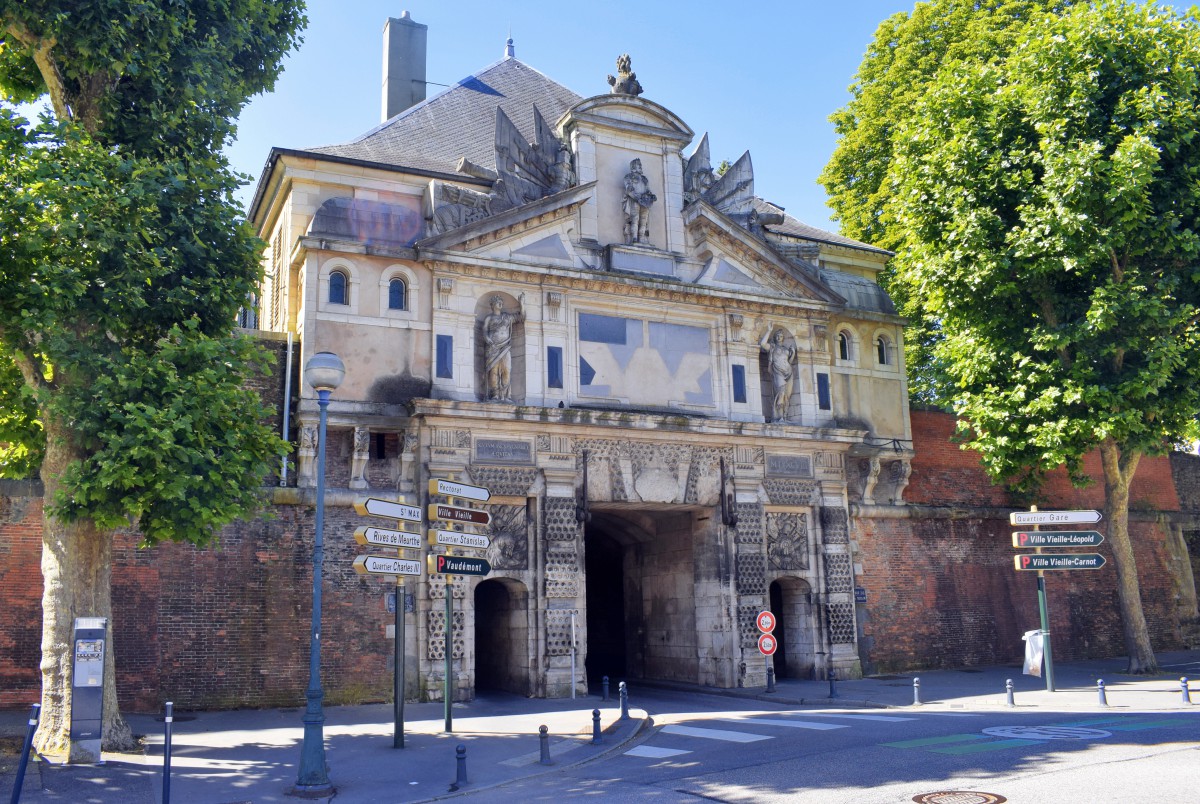
A few metres to the North from the Craffe Gate, stands the Citadel Gate. Duke Charles III commissioned it in the 17th century as part of the duplication of Nancy’s fortifications.
It is hard today to imagine how it used to look like back then: four bastions surrounded the Citadel Gate and ditches separated it from the Craffe Gate. In the 17th century, these ditches were filled with water from the Boudonville Stream during the French occupation. But a defensive gate needed to be decorated with the style and taste of the time. First look at the outside of the gate which once overlooked the countryside, and you will observe how, in 1598, architect Drouin le Jeune designed the Citadel Gate in a Renaissance style, recognisable by the broken pediment enhanced with arms trophies.
The two allegoric statues refers to the Dukes’ virtue (maybe Equity and Temperance)… these are not copies but originals! As for the original coat of arms of the Duke between the statues, they disappeared at the Revolution, as did the statue of the Virgin between both frames of the gate’s pediment. In 1863, sculptor Viard restored the gate and fixed a statue of Duke Charles III (or is it Jean de Salm) where the Virgin used to stand.
Now, back to the city side of the gate, you can see two Hercules brandishing a club, arm trophies, as well as four beautiful mannerist compositions of two horsemen and two infantrymen.
Retrace your steps back to the Craffe Gate and continue your walk through the Grande Rue with its small boutiques and cosy restaurants. You will then reach the little court of the Cordeliers Church. To buy your entrance tickets, you will first need to enter the Duke’s Palace, a few metres further on! If you plan to visit the Dukes’ Palace as well, buy a pass that will give you access to the Church, the Lorraine Museum and the Museum of Popular Arts and Tradition.
The Church of the Cordeliers (Église des Cordeliers)

Next to the Dukes’ Palace stands the church of the Cordeliers, which takes its name from the Franciscan Order whose members wore a cord around their waist. If the building does not look too grandiose, it nevertheless holds a long and rich history that still continues today with the descendant of the Habsburg dynasty. Duke René II commissioned the building of the Church in the 15th century as a dedication for his victory over Charles the Bold at the battle of Nancy in 1477.
The building does not hold regular services today and you may find that it is something between a church and a museum, as it serves as a necropolis for the Dukes of Lorraine.
Read more about the Church of the Cordeliers in Nancy here.
The Ducal Palace
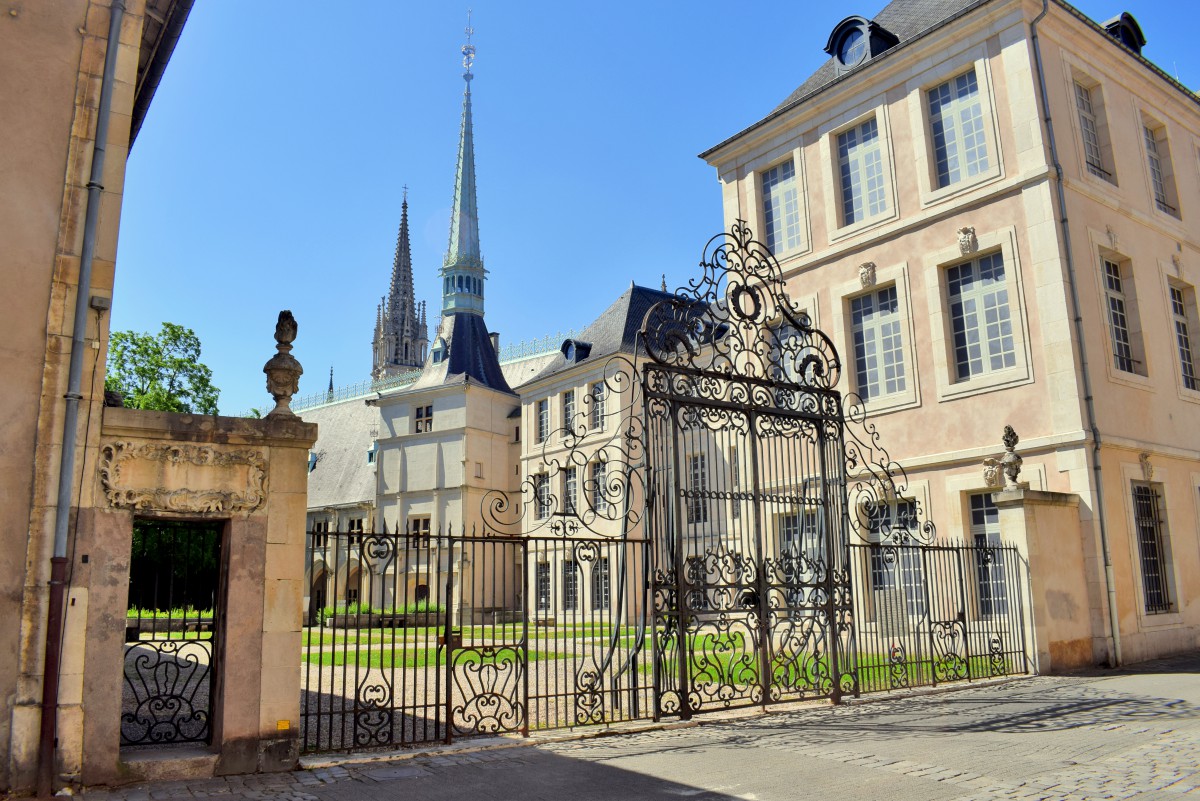
The long façade of the Palace that you can see from the Grande Rue was the epicentre of the Dukes of Lorraine’s authority. The Ducal Palace now hosts the Lorraine Museum.
Read more about the Ducal Palace here.
Your day must now be towards its end! You may return to the Place Saint Epvre for a coffee and afterwards continue your stroll to the nearby Place de la Carrière and Place Stanislas… but remember that that is another era – another atmosphere: the classical 18th century city of King Stanislas.
Did you like what you read? If so, please share this article on Facebook or twitter! 🙂
Pin it for later:
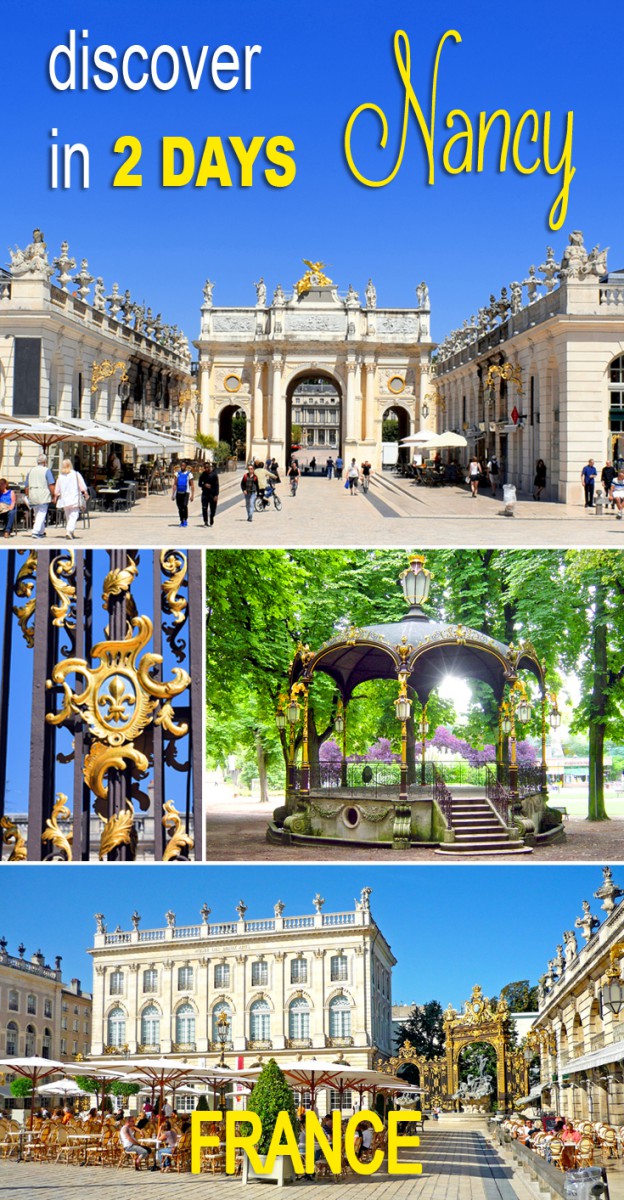
Check out the website of the Tourist Information Centre for more info about staying in Nancy. You can book your accommodation via their website: check it out here.



